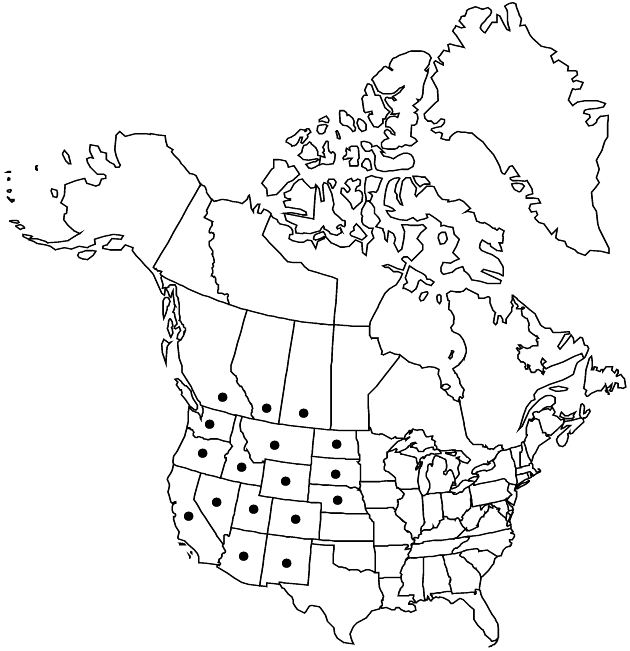Gnaphalium palustre
Trans. Amer. Philos. Soc., n. s. 7: 403. 1841.
Common names: Western marsh cudweed
Synonyms: Filaginella palustris (Nuttall) Holub Gnaphalium palustre var. nanum Jepson Gnaphalium heteroides
Annuals, (1–)3–15(–30) cm; taprooted or fibrous-rooted. Stems commonly with decumbent branches produced from bases, densely or loosely and persistently woolly-tomentose. Leaf blades spatulate to oblanceolate-oblong, 1–3.5 cm × 3–8(–10) mm. Bracts subtending heads oblanceolate to obovate, 4–12 × 1.5–4 mm, shorter than or surpassing glomerules. Heads in capitate glomerules (at stem tips and in distalmost axils). Involucres 2.5–4 mm. Phyllaries brownish, bases woolly, the inner narrowly oblong with white (opaque), blunt apices. 2n = 14.
Phenology: Flowering May–Oct.
Habitat: Arroyos, sandy streambeds, pond edges, potholes, other moist, open sites
Elevation: 100–2900 m
Distribution
Loading map...

Alta., B.C., Sask., Ariz., Calif., Colo., Idaho, Mont., Nebr., Nev., N.Mex., N.Dak., Oreg., S.Dak., Utah, Wash., Wyo., Mexico.
Discussion
Selected References
None.
Lower Taxa
None.